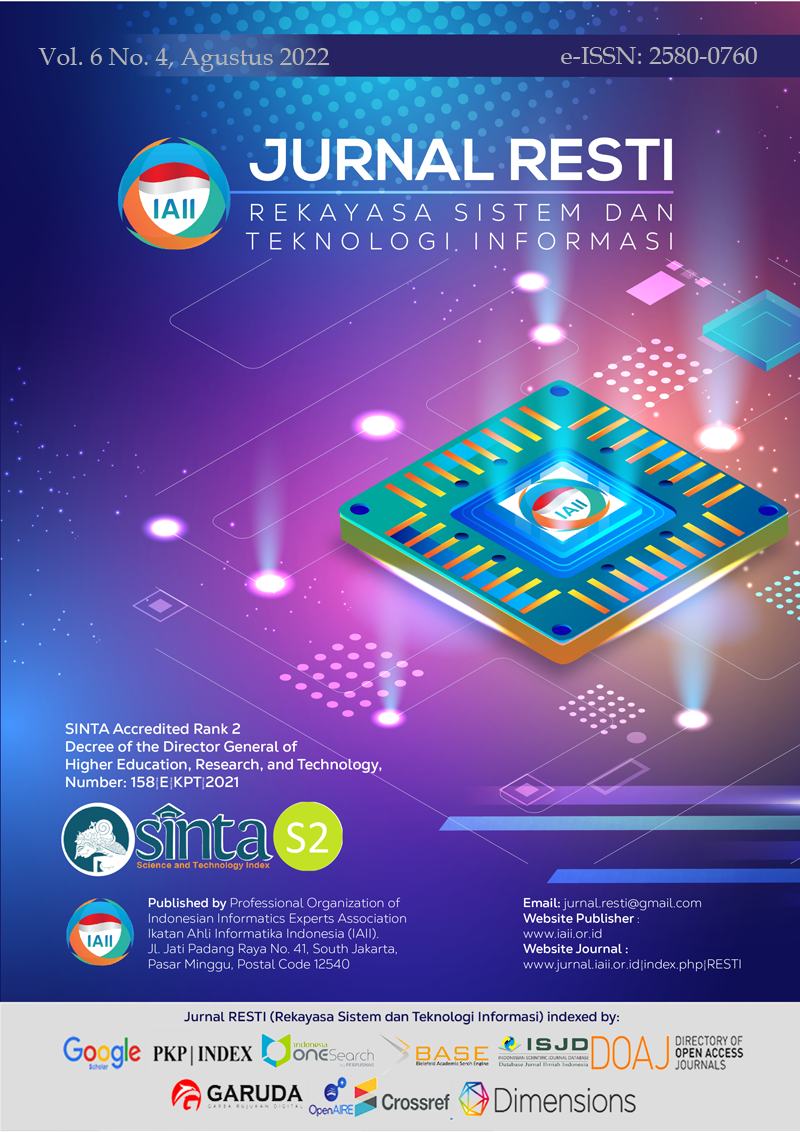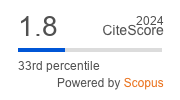Hierarchical Clustering and Deep Learning for Short-Term Load Forecasting with Influenced Factors
Abstract
Stable and reliable electricity is one of the essential things that must be maintained by the transmission system operator (TSO). That can be achieved when the TSO is able to set the balance between demand and production. To maintain the balance between production and demand, TSO should estimate how much demand must be served. In order to do that, the next day short-term load forecasting is an essential step that TSO should be done. Generally, load forecasting can be done through conventional techniques such as least square, time series, etc. However, this method has been sought over time as the electricity demand is increasing significantly over the years. Hence, this paper proposed another approach for short-term load forecasting using Deep Neural Networks, widely known as Long Short-Term Memory (LSTM). In addition, this paper clusters historical electrical loads to obtain similar patterns into several clusters before forecasting. We also explored other influence factors in the observed days, such as weather conditions and the human activity cycle represented by holidays, in a neural network-based classification model to predict the targeted clusters of electrical loads. East Java sub-system is used as the test system to investigate the efficacy of the proposed load forecasting method. From the simulation results, it is found that the proposed method could provide a better forecast on all indicators compared to the conventional method, as indicated by MaxAPE and MAPE are around 4,91% and 2,02%, while the RMSE is 112,08 MW.
Downloads
References
H. Setiadi et al., “Multi-Mode Damping Control Approach for the Optimal Resilience of Renewable-Rich Power Systems,” Energies (Basel), vol. 15, no. 9, May 2022, doi: https://doi.org/10.3390/en15092972.
R. M. Bamatraf, R. Indralaksono, and I. Robandi, “Application of Craziness Particle Swarm Optimization for Optimal Unit Commitment,” in International Student Conference on Advanced Science and Technology (ICAST), 2009, pp. 9–16.
R. Indralaksono, R. M. Bamatraf, and I. Robandi, “Craziness Particle Swarm Optimization (CRPSO) Solution for Optimal Economic Dispatch,” in Proceedings of National Seminar on Applied Technology, Science, and Arts (APTECS), 2009, pp. 2086–1931.
R. Indralaksono, S. Dwiratha, A. M. Benie Zakariya, F. Ulfi, M. A. Fassamasi, and I. Robandi, “Optimal Management Decision for Large Scale Economic Dispatch using Artificial Immune System Clonal Selection Algorithm (AISCSA),” in International Student Conference on Advanced Science and Technology (ICAST), 2010, pp. 1–1.
A. Sallam and O. Malik, “Load Forecasting,” in Electric Distribution Systems, Second Edition, Second., Hoboken, NJ, USA: John Wiley & Sons, Inc., 2018, pp. 41–71. doi: https://doi.org/10.1002/9781119509332.ch4.
R. Indralaksono, A. M. Firdaus, M. Abdul Wakhid, N. U. Andreas, G. H. Wibowo, and M. Abdillah, “Short-Term Load Forecasting using Long Short-Term Memory Network on Various Sub System Load in PLN Indonesia,” in ICT-PEP 2021 - International Conference on Technology and Policy in Energy and Electric Power: Emerging Energy Sustainability, Smart Grid, and Microgrid Technologies for Future Power System, Proceedings, 2021, pp. 175–179. doi: https://doi.org/10.1109/ICT-PEP53949.2021.9601005.
J. Wang, R. Jia, W. Zhao, J. Wu, and Y. Dong, “Application of the largest Lyapunov exponent and non-linear fractal extrapolation algorithm to short-term load forecasting,” Chaos, Solitons and Fractals, vol. 45, no. 9–10, pp. 1277–1287, 2012, doi: https://doi.org/10.1016/j.chaos.2012.06.009.
K. Srinivasan and R. Pronovost, “Short term load forecasting using multiple correlation models,” IEEE Transactions on Power Apparatus and Systems, vol. 94, no. 5, pp. 1854–1858, 1975, doi: https://doi.org/10.1109/T-PAS.1975.32031.
J. Wu and D. Niu, “Short-term power load forecasting using Least Squares Support Vector Machines (LS-SVM),” 2nd International Workshop on Computer Science and Engineering, WCSE 2009, vol. 1, pp. 246–250, 2009, doi: https://doi.org/10.1109/WCSE.2009.663.
S. J. Huang and K. R. Shih, “Short-term load forecasting via ARMA model identification including non-Gaussian process considerations,” IEEE Transactions on Power Systems, vol. 18, no. 2, pp. 673–679, May 2003, doi: https://doi.org/10.1109/TPWRS.2003.811010.
Shyh-Jier Huang and Kuang-Rong Shih, “Short-term load forecasting via ARMA model identification including non-gaussian process considerations,” IEEE Transactions on Power Systems, vol. 18, no. 2, pp. 673–679, May 2003, doi: 10.1109/TPWRS.2003.811010.
S. Karthika, V. Margaret, and K. Balaraman, “Hybrid short term load forecasting using ARIMA-SVM,” 2017 Innovations in Power and Advanced Computing Technologies, i-PACT 2017, vol. 2017-January, pp. 1–7, 2017, doi: https://doi.org/10.1109/IPACT.2017.8245060.
K.-L. Ho, Y.-Y. Hsu, C.-F. Chen, and T.-E. Lee, “Short-term Load Forecasting of Taiwan Power System using a Knowledge-based Expert System,” IEEE Transactions on Power Systems, vol. 5, no. 4, 1990, doi: https://doi.org/10.1109/59.99372.
E. E. Elattar, N. A. Sabiha, M. Alsharef, M. K. Metwaly, A. M. Abd-Elhady, and I. B. M. Taha, “Short term electric load forecasting using hybrid algorithm for smart cities,” Applied Intelligence, vol. 50, no. 10, pp. 3379–3399, Oct. 2020, doi: https://doi.org/10.1007/s10489-020-01728-x.
M. K. Wisyaldin, G. M. Luciana, and H. Pariaman, “Using LSTM network to predict circulating water pump bearing condition on coal fired power plant,” in Proceeding - 2nd International Conference on Technology and Policy in Electric Power and Energy, ICT-PEP 2020, Sep. 2020, pp. 54–59. doi: https://doi.org/10.1109/ICT-PEP50916.2020.9249905.
A. Dalgkitsis, M. Louta, and G. T. Karetsos, “Traffic forecasting in cellular networks using the LSTM RNN,” in ACM International Conference Proceeding Series, Nov. 2018, pp. 28–33. doi: https://doi.org/10.1145/3291533.3291540.
W. Kong, Z. Y. Dong, Y. Jia, D. J. Hill, Y. Xu, and Y. Zhang, “Short-Term Residential Load Forecasting Based on LSTM Recurrent Neural Network,” IEEE Transactions on Smart Grid, vol. 10, no. 1, pp. 841–851, Jan. 2019, doi: 10.1109/TSG.2017.2753802.
K. E. Farfar and M. T. Khadir, “A two-stage short-term load forecasting approach using temperature daily profiles estimation,” Neural Computing and Applications, vol. 31, no. 8, pp. 3909–3919, Aug. 2019, doi: 10.1007/s00521-017-3324-x.
F. L. Quilumba, W.-J. Lee, H. Huang, D. Y. Wang, and R. L. Szabados, “Using Smart Meter Data to Improve the Accuracy of Intraday Load Forecasting Considering Customer Behavior Similarities,” IEEE Transactions on Smart Grid, vol. 6, no. 2, pp. 911–918, Mar. 2015, doi: 10.1109/TSG.2014.2364233.
A. T. R. Dani, S. Wahyuningsih, and N. A. Rizki, “Penerapan Hierarchical Clustering Metode Agglomerative pada Data Runtun Waktu,” Jambura Journal of Mathematics, vol. 1, no. 2, pp. 64–78, Jul. 2019, doi: https://doi.org/10.34312/jjom.v1i2.2354.
D. T. Utari and D. S. Hanun, “Hierarchical Clustering Approach for Region Analysis of Contraceptive Users,” EKSAKTA: Journal of Sciences and Data Analysis, pp. 99–108, Sep. 2021, doi: https://doi.org/10.20885/EKSAKTA.vol2.iss2.art3.
A. G. Farizawani, M. Puteh, Y. Marina, and A. Rivaie, “A review of artificial neural network learning rule based on multiple variant of conjugate gradient approaches,” in Journal of Physics: Conference Series, Jun. 2020, vol. 1529, no. 2. doi: https://ui.adsabs.harvard.edu/link_gateway/2020JPhCS1529b2040F/doi:10.1088/1742-6596/1529/2/022040.
B. Handoko, R. M. Bamatraf, R. Indralaksono, M. Abdillah, and I. Robandi, “Short-term Load Forecasting using Hybrid Artificial Neural Networks and Particle Swarm Optimization,” in Proceedings of National Seminar on Applied Technology, Science, and Arts (1 st APTECS), 2009, pp. 2086–1931.
D. Yu, W. Choi, M. Kim, and L. Liu, “Forecasting day-ahead hourly photovoltaic power generation using convolutional self-attention based long short-term memory,” Energies (Basel), vol. 13, no. 15, Aug. 2020, doi: https://doi.org/10.3390/en13154017.
F. Liu, T. Dong, T. Hou, and Y. Liu, “A Hybrid Short-Term Load Forecasting Model Based on Improved Fuzzy C-Means Clustering, Random Forest and Deep Neural Networks,” IEEE Access, vol. 9, pp. 59754–59765, 2021, doi: https://doi.org/10.1109/ACCESS.2021.3063123.
K. Cho et al., “Learning Phrase Representations using RNN Encoder-Decoder for Statistical Machine Translation,” in Proceedings of the 2014 Conference on Empirical Methods in Natural Language Processing (EMNLP), Jun. 2014, pp. 1724–1734. doi: https://doi.org/10.48550/arXiv.1406.1078.
S. V. Oprea and A. Bara, “Machine Learning Algorithms for Short-Term Load Forecast in Residential Buildings Using Smart Meters, Sensors and Big Data Solutions,” IEEE Access, vol. 7, pp. 177874–177889, 2019, doi: https://doi.org/10.1109/ACCESS.2019.2958383.
Copyright (c) 2022 Jurnal RESTI (Rekayasa Sistem dan Teknologi Informasi)

This work is licensed under a Creative Commons Attribution 4.0 International License.
Copyright in each article belongs to the author
- The author acknowledges that the RESTI Journal (System Engineering and Information Technology) is the first publisher to publish with a license Creative Commons Attribution 4.0 International License.
- Authors can enter writing separately, arrange the non-exclusive distribution of manuscripts that have been published in this journal into other versions (eg sent to the author's institutional repository, publication in a book, etc.), by acknowledging that the manuscript has been published for the first time in the RESTI (Rekayasa Sistem dan Teknologi Informasi) journal ;








